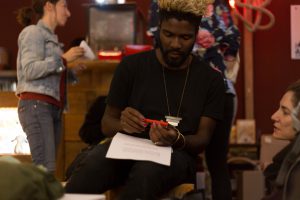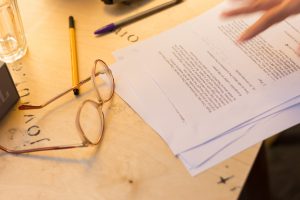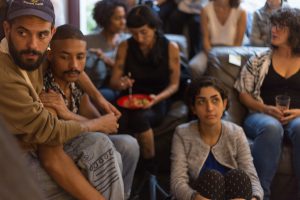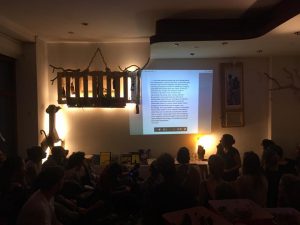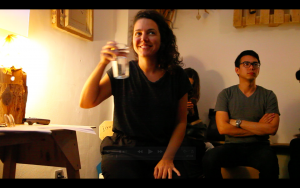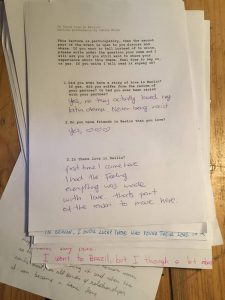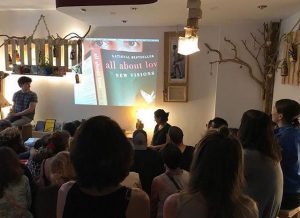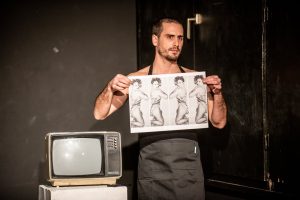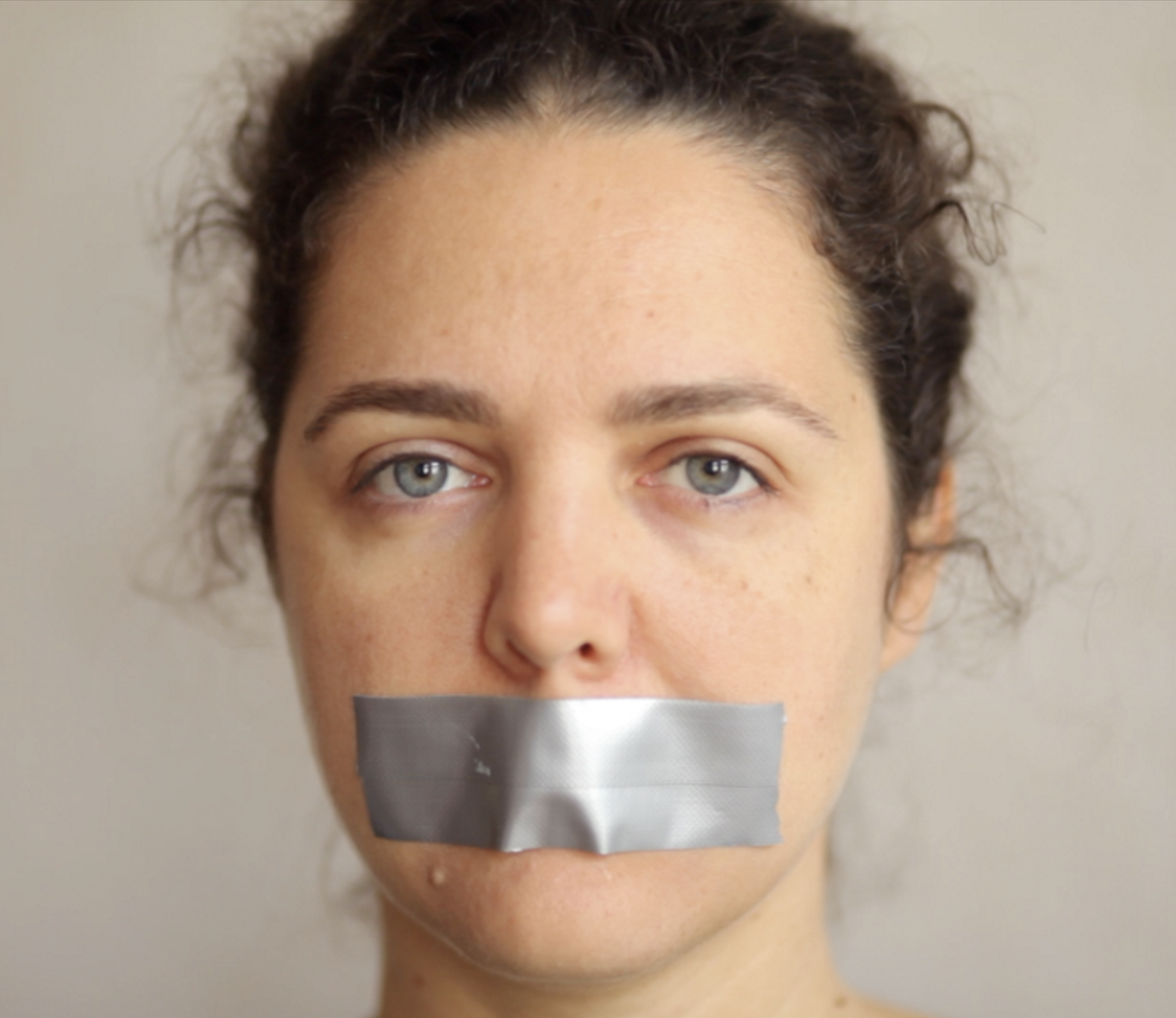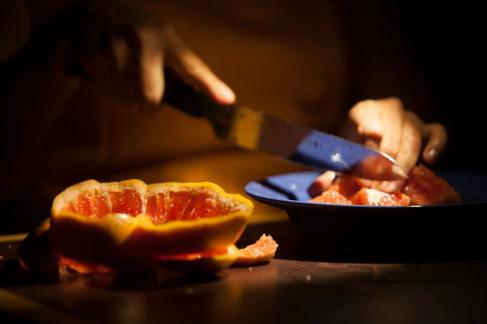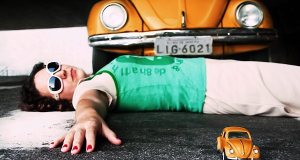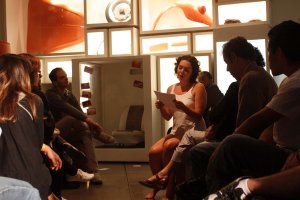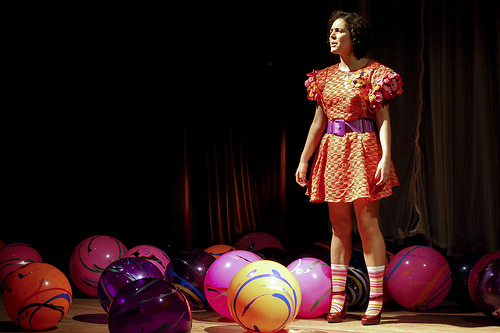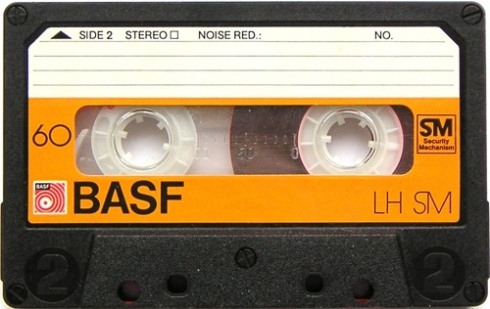2020: The Book of S of I : Creatures born from Hopelessness
Another world, post-apocalypse. Feverish nightmares turning into utopian dreams. Bodies aligned in pleasure, summoning the ghosts of the past and the future. Give yourself into the world of The Book of S of I – a queer feminist sci-fi Saga about the desire to belong, about the power of mutual care, of bodily pleasures, and the yearning for tenderness.
The Book of S of I. Chapter One: Creatures born from Hopelessness is the first part of the trilogy.
The premiere of the film on June 13th. 2020 on the homepage of the Haus der Kulturen der Welt as part of the New Alphabet School # 4 Caring symposium
hkw.de
The film was created with the support of the M.1 Arthur Boskamp Foundation and the sponsorship award.
A Film by Malu Blume
2019: Beyound Vision




What happens when our vision cedes and we cannot experience our surrounding the way we did before? Are the remaining senses sharpened? Does reality blur?
Beyond Vision is a binaural one-to-one performance on Tempelhofer Feld. Blindfolded and wearing headphones, let yourself be guided by the hands of an invisible companion. Together you embark on a journey into the unknown. You will find yourself in dreamlike situations and discover the invisible and the intangible. The experience leads you gently and safely through your inner images, different feelings and states of being. It is an invitation to let yourself fall into uncertainty, to trust, to give in, to be touched, and yet be entirely with yourself.
Commissioned by B_Tour
in the context of Tracks in a Box.
Guidance: Shelley Etkin, Camila Rhodi
Voices: Shelley Etkin, Charlotte Happe
Thanks to Klara Pfeiffer
Photos © Joana Dias
Tempelhofer Feld, Berlin, 2019
https://ilonamarti.com/Beyond-Vision
2018: Logistics of Loneliness in collaboration with Marja Christians. Rough Proposals, Mousonturm, Frankfurt
2016 : Walking with Ghosts in collaboration with Ghost Cinema
In the 1920’s, Filmstadt Weißensee, the now almost forgotten area in northern Berlin was once the city’s cultural hotspot. Stars like Marlene Dietrich and Fritz Lang were there, at Calagariplatz and on the Gustav-Adolf Straße, which at that time was lined with bright lights and 20 cinema houses. Among the finest and most popular of these was the former silent-movie theater Delphi. Direct on Caligariplatz, this relic rests like a hidden jewel, unrecognizable from the outside, and practically unknown to most Berliners. The theater miraculously survived WWII, and remained closed during GDR times. In fact, the theater has remained closed to the general public since the war, and remains so today. This building was one of the first cinemas of its size in the world, and the original interior of this former 870 seat theater remains intact. It is one of the best remaining examples of the glamour and flair of this important cultural era- the heyday of German silent film.
Directed by Paola Barreto
Videoperformance ( audiovisual editing + live projections/ mapping ) : Moana Mayall
Parangotela performance: Camila Rhodi
2015: “Fluids” – a 2015 reinvention of Allan Kaprow’s happening from 1967. Artist Alexandra Pirici
kaprowinberlin.smb.museum/en/
This version of Kaprow’s “Fluids” operates a change of material: from ice-blocks to the assemblage of the human body. The new work attempts to re-address and re-position itself in relation to some of the issues the original work tackled with – the medium of sculpture, the concept of monument, temporality, participation, production of collectivity – while also considering the human body as medium and the materiality of “immaterial” performative works and their economy at a time of a (second) “performative turn” in the visual arts. It also attempts a more abstract way of being in common – the participants building themselves into a 9 meters long, 3 meters wide structure instead of building an exterior object, thus reflecting on the effects of today’s immaterial labour (in affluent societies) as opposed to the former dynamics of the industrial age and the factory floor.
The living, sounding sculpture “melted” away from 12 to 8 p.m. in Potsdamer platz.
curated by Lisa Marei Schmidt and Udo Kittelmann production: Hannes Frey
participants: Ferre Naima, Valerie Renay, Zuzanna Ratajczyk, Paul Walker, Jozefiens Beckers, Reza Mirabi, Juan Gabriel Harcha, Julia Illmer, Josephine Findeisein, Marc Carrera, Annekatrin Kiesel, Amit Goldenberg, Miriam Kongstad, Maria Ferrara, Iam Campigotto, Helen Follert, Kathrin Knopfle, Jasmin Ihrac, Gregori Homa, Katarzyna Guzowska, Jolika Poulopoulou, Darcy Wallace, Julia Jadkowski, Ana Mrdjanov, Leonie Nadler, Jana Kruger, Carina Erdmann, Sura Hertzberg, Ralph Klein, Annette Zander, Alice Heyward, Yuca Meubrink, Viviana Druga, Rene Ricarda Vollhardt, Edith Buttingsrud Pedersen, Carlos Kong, Emily Ranford, Thomas Mielmann, Tobias Kluge, Corinne Schlichting, Lenine Guevara, Martha Hincapié Charry, Andrei Barza, Rachell Clark, Tatiana Heide, Laura von Raffay, David Loscher, Neele Ruckdeschel, Sven Hermans, Frida Yngvesson, Hanna Nordqvist, Giulia Heder, Sarah Bouars, Maddy White, Miha Jensterle, Rebekka Böhme, Pedro Vieira da Costa Filho, Juliane Dames, Jessica Kammerer, Paul Riemann, Eva Rozalia Tankó, Judica Albrecht, Lola Lustosa, Camila Rhodi, Dmitriy Povernov, Benjamin Egger, Uwe Zimmermann, Sarah Berger, Marie Zwinzscher, Sophie Camille Brunner, Anton Rose
commissioned by Nationalgalerie – Berlin in the frame of Stadt/Bild, Berlin Art Week
2015: ‘I am not a feminist but’ in collaboration with Makiko Yamamoto for Liquid Architecture . Melbourne . Austrália
This work was produced in collaboration with Japanese artist Makiko Yamamoto. Rhodi co-developed a performance piece to accompany Yamamoto’s 12 minute audio piece filled with the single sentence, ‘I’m not a feminist but…’. Yamamoto reads the sentence out loud with different distortions in speed, tone, and volume. Together both artists made the video performance.



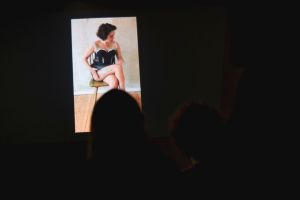
2013 No Parking
Solo site specific performance about home for the master project of Jasmin Assade at Freie Universität Berlin.

2012
U-bahn Antigone in collaboration with Yaell Sherill
Live Performance for steinum knitwear for Berlin Fashion Week, Berlin, Germany



